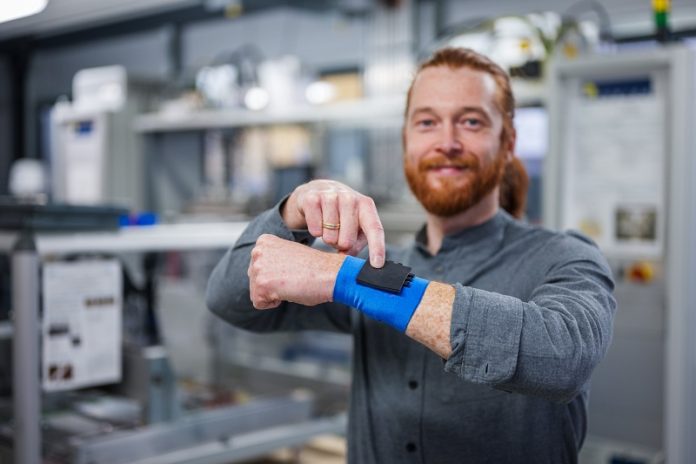
A team of researchers from Saarland University in Germany has found a way to turn super-thin, stretchy films—about the thickness of kitchen cling wrap—into smart materials that can bring everyday objects to life.
Led by Professors Stefan Seelecke and Paul Motzki, the team is using these special films to build smart textiles, surfaces, and devices that can feel touch, move in specific ways, and even save energy.
These thin films, called dielectric elastomers (DE), respond to electricity. Each side of the film is coated with a very thin layer that conducts electricity.
When voltage is applied, the layers attract each other, squeezing the film and causing it to expand sideways.
This movement can be controlled to create actions like vibration, pushing, pulling, or holding a certain shape. Even better, the film doesn’t always need power to keep its position—saving energy.
The possibilities are exciting. In wearable devices, these films can provide haptic feedback, which means they can move or press against the skin to simulate sensations.
For example, a VR gamer could feel textures or impacts while playing, making the experience more immersive. When added to smart gloves, the film can track finger movements and send information to a computer.
On a flat screen, the film can create the feeling of pressing a button, slider, or switch—turning glass into something you can physically feel.
But that’s just the beginning. The research team is also working on lightweight loudspeakers that use far less energy than current ones, noise-canceling fabrics, and smart surfaces that react to touch.
What’s especially clever about these films is that they can act as their own sensors. As the film bends or stretches, its electrical properties change. The team can measure this to track exactly how the film moves—no extra sensors needed. They’re also using artificial intelligence to “teach” the film how to behave in certain ways, like flexing at certain speeds or holding specific shapes.
In their latest work, the team is aiming to make the films move even faster—into ultrasonic frequencies—by improving the conductive layer. Originally, they used a powdered carbon layer, but it had too much resistance for high-speed performance.
Now, they are replacing it with an ultrathin metal coating, which allows faster movement and lower energy use.
This new coating is applied using a method called sputtering, where a super-thin metal layer—only 10 nanometers thick—is deposited onto the film. To make it flexible, they first stretch the film before applying the metal. When the film relaxes, the metal wrinkles like tape on a deflated balloon. This creates a stretchy, low-resistance surface that still works when bent.
Another big goal is to build flexible circuit boards (the parts that power electronics) using these films. Right now, most circuit boards are rigid and flat. The team hopes to replace them with soft, bendable versions that could be cheaper and more energy-efficient—ideal for wearable tech or flexible devices.
The research team is also building film-based transistors (the parts that control signals and voltages). By stretching and relaxing the film, they can control whether electricity flows through it or not, like flipping a switch. This could be useful for powering pumps, valves, or speakers with quick, high-voltage bursts.
At this year’s Hannover Messe tech fair, the team will showcase a wearable wristband made from this smart film. When you draw shapes on the wristband, it can sense the pressure and movement of your finger. Then, machine learning software recognizes what was drawn—like letters or symbols.
Other cool demos will include smart fabrics, energy-saving pumps, and touch-sensitive actuators that respond to your movements—all powered by these incredible self-sensing films.
With this research, the team is turning soft, stretchy films into powerful, intelligent materials that could change the way we interact with clothing, screens, and machines in everyday life.



